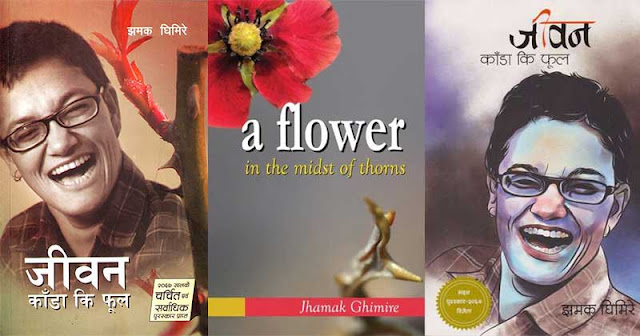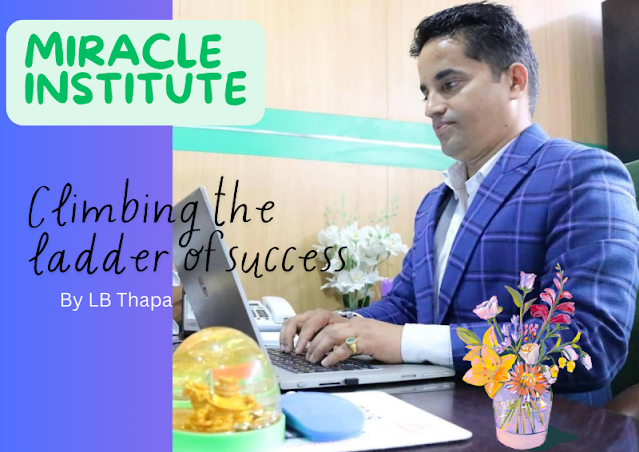DR. HOMI JEHANGIR BHABHA: THE FATHER OF INDIAN ATOMIC INITIATION
Dr. Bhabha remained a bachelor all his life, he was so engrossed in his work that he did not have time to think about marriage. He knew very well that after marriage he would not be able to spend much time on his wife and decided to remain a bachelor. Dr. Bhabha devoted all his life to the cause of science.
 |
| India is much indebted to Dr. Homi Jehangir Bhaba for his contribution to Indian atomic development. |
Dr. HOMI JEHANGIR BHABHA is called the father of Indian Nuclear Science. Dr. Bhabha founded the TATA Institute of Fundamental Research (TIFR) in Mumbai in 1945. Under the aegis of Dr. Bhabha the first Indian Atomic Research Center (IARC) was established at Trombay, Bombay. Likewise, India's first atomic reactor, named APSARA was also commissioned in 1956.
In 1948, Jawaharlal Nehru, the first prime minister of independent India, had formed the Atomic Energy Commission (AEC) where Dr. Bhabha was appointed its first chairman. By the tireless efforts of Dr. Bhabha India became the first country in Asia to have a nuclear program.
Dr. Bhabha's dream was to see India equipped with nuclear power so that India's defense could be made impregnable. Dr. Bhabha worked all his life for the development of Indian nuclear power. During his time Dr. Bhaba occupied different positions and made immense contributions to enrich India's strength in nuclear science. But his untimely death was a serious jolt to the steady development of Indian nuclear science.
On the fateful day on January 24, 1966, he died at the age of 57 in a plane crash on Mont Blanc while on his way to attend an international seminar on atomic energy in Vienna. If Dr. Bhabha had survived a few more years he would have definitely taken India to a new height.
HOMI JEHANGIR BHABHA was born on October 30, 1906, in Mumbai (formerly Bombay) India. Bhabha was born into a well-off Parsi family; his father was a well- known advocate. The early childhood of Bhabha was spent in relative comfort and luxury, but Bhabha, from his childhood, preferred simplicity and was far from conceited. Bhabha was very simple and benign.
When Bhabha was studying in school he also took an interest in music and soon he became an accomplished musician. He could play many musical instruments with ease. His parents, relatives, and friends were surprised at seeing the expertise Bhabha had on several musical instruments. Also, he was a good painter.
At the beginning of his school days, Bhabha was quite popular among the teachers and his classmates. He passed all examinations with distinction. This was the reason why Bhabha was the cynosure of all the teachers and students. From a very early age, Bhabha began taking interest in science. As a schoolboy, he began a serious study of electricity and magnetism.
At the age of 16 Bhabha passed the Senior Cambridge Leaving Examination (SCLE) at the Cathedral High School, Bombay which he attended. After this Bhabha's parents wanted to send the boy to Cambridge, England, to receive higher education in engineering so that he could eventually work as an engineer with the TATA group of industries one of the biggest companies in India. Bhabha's family had a very close relationship with the TATA Group; this may have been the reason why Bhabha's parents wanted him to be an engineer. Bhabha sailed for Cambridge to study engineering at Caius College in 1927 at the age of 21.
After Bhabha joined Caius College and came into contact with some eminent scholars. He started to study Mechanical Engineering in Cambridge. He passed the final exam in Mechanical Engineering with first division marks in 1930 and went on to pursue higher studies in physics. Actually, mechanical engineering was not his goal. He now decided to bring in his favorite subjects of physics and mathematics and began to study anew.
Bhabha took a deep interest in nuclear physics and began to study the subject very seriously. His teachers and fellow students were surprised at the remarkable progress Bhabha had made in the study of cosmic rays. Bhabha went through hard studies and earned a Ph.D. from Cambridge University in 1935. While living in Europe Dr. Bhabha came into contact with eminent scholars like Niels Bohr, James Franck, and Enrico Fermi.
These scientists influenced and molded Bhabha's scientific perspective. One of Dr. Bhabha's bosom friend in Cambridge was W.B. Lewis. Later, Lewis played a crucial role in the development of the Indian nuclear program. Bhaba's tireless efforts led him to discover the idea of fission, and he also made significant studies on subjects like the classical theory of spinning particles, cosmic radiation, quantum theory, etc.
After having spent several productive years in Europe Bhabha returned to India in 1939. The Indian Institute of Sciences, Bangalore, was eagerly awaiting Dr. Bhabha to join its institute. Bhabha was appointed as a Reader in Theoretical Physics for the full-fledged research work, in addition, his task was to mold the young minds of Indian students. Bhabha was very glad to work with the Nobel laureate Sir C.V.Raman, who was then associated with the Indian Institute of Sciences.
Bhabha soon became a well-known and popular name in the Institute. His in-depth knowledge of physics and mathematics attracted everyone's attention including Professor C.V.Raman. Bhabha continued several experiments in the Institute that he had begun in Europe, among them was one on the cosmic ray. After evaluating the massive works of Bhabha he was elected a member of the Royal Society in 1941 at the age of 32. The Cambridge University honored Bhabha with the Adams Prize in 1942 at the age of 33.
Bhabha's vision was to make a modern India equipped with nuclear power. Dr. Bhabha and his colleagues immensely felt it was essential to have a well-facilitated nuclear research center in the country, so that an advanced level of research could be conducted without interruption. Due to the pressing need for such a research center, Bhabha wrote a proposal to the Tata Institute and highlighted the immense importance of a research center to India.
It was due to Dr. Bhabha's enormous efforts that the Tata Institute was convinced to lay the foundation of the Tata Institute of Fundamental Research (TIFR) in 1945, and Dr. Bhabha was appointed its first director. This way a new chapter was written in the history of Indian science. After establishing TIFR, India was quite ready to take a giant step in the field of nuclear science.
Today the Tata Institute of Fundamental Research (TIFR) has gained an international reputation for its wide range of nuclear and atomic research and experiments. The TIFR is well-equipped with all the necessary equipment that any other modern nuclear research center has today. Bhabha devoted all his time to research works in the TIFR. He was fully backed up by the first prime minister of independent India, Jawaharlal Nehru. Mr. J.R.D. Tata had also guaranteed to extend all possible assistance to Dr. Bhabha.
When Dr. Bhabha was studying in Europe he personally met many Indian scientists. Dr. Bhabha wanted to invite them to India to exploit their profound knowledge and many years of experience in order to build up a modern and prosperous India. As Dr. Bhabha had already won the confidence of Pt. Jawaharlal Nehru. He was allowed to do whatever he thought to be in the best interests of the country. Dr. Bhabha had invited some outstanding Indian scientists to work with the TIFR.
Dr. Bhabha is regarded as the master craftsman of India's nuclear research program. He had also initiated the work on the nuclear weapons program. Dr. Bhabha was at the helm of the nuclear science program where he set priorities and gave directions for its steady development. It was due to Dr. Bhabha's tireless work that India was successful in conducting the first nuclear explosion on May 18, 1974, at Pokhran, Rajasthan. Due to this successful nuclear explosion, India became one of the few countries in the world to have nuclear power.
Dr. Bhabha remained a bachelor all his life, he was so engrossed in his work that he did not have time to think about marriage. He knew very well that after marriage he would not be able to spend much time on his wife and decided to remain a bachelor. Dr. Bhabha devoted all his life to the cause of science.
When Dr. Bhabha was at the pinnacle of his success he tragically died in a plane crash while going to attend an important conference. He boarded the ill-fated Air India Boeing 707 crashed into Mt Blanc the famous Swiss mountain on January 24, 1966, at the age of 60.
Dr. Bhabha was the chief architect of Indian atomic development, under his able leadership Indian scientific development made steady progress, but his untimely death was a drastic blow and brought everything to a screeching halt. His amazing and awe-inspiring contribution to the enriching of Indian science has made him a role model and an epitome for the new breed of scientists in India.
As a token of love and respect to Dr. Bhabha, the name of the Atomic Energy Establishment, Trombay, was renamed the Dr. Bhabha Atomic Research Center.
Great souls like Dr. Bhabha are very rare. He was truly a great soul who lived and worked towards a single purpose in life, for him science was everything. Once, when his parents insisted that he marry, he blatantly refused and said, "I have already married science. Science is my mistress, and she lives in my heart. How can you suggest to me that I keep two mistresses at a time?" Only a person like Dr. Bhabha could say something like this. Dr. Bhabha has become immortal due to his precious contribution to Indian Nuclear Science.
Thank you very much
for reading this article. I hope you liked this article. I will be glad if you
take a little time and make a comment about this article. Your comment is highly
appreciated.
LEGAL
WARNING
LB Thapa is a Pokhara-based freelance writer and author.
All rights reserved. No articles and
photos published in this blog can be reproduced without the prior written
permission of the author. Legal action will be taken immediately if any
articles or photos are reproduced without the author’s knowledge. However,
articles or photos can only be reproduced by duly mentioning the author’s name
and the blog's name (read2bhappy.blogspot.com). The author
must be informed by sending an email. All articles and the photos published in
this blog are the copyright property of LB THAPA.









.png)
Comments
Post a Comment